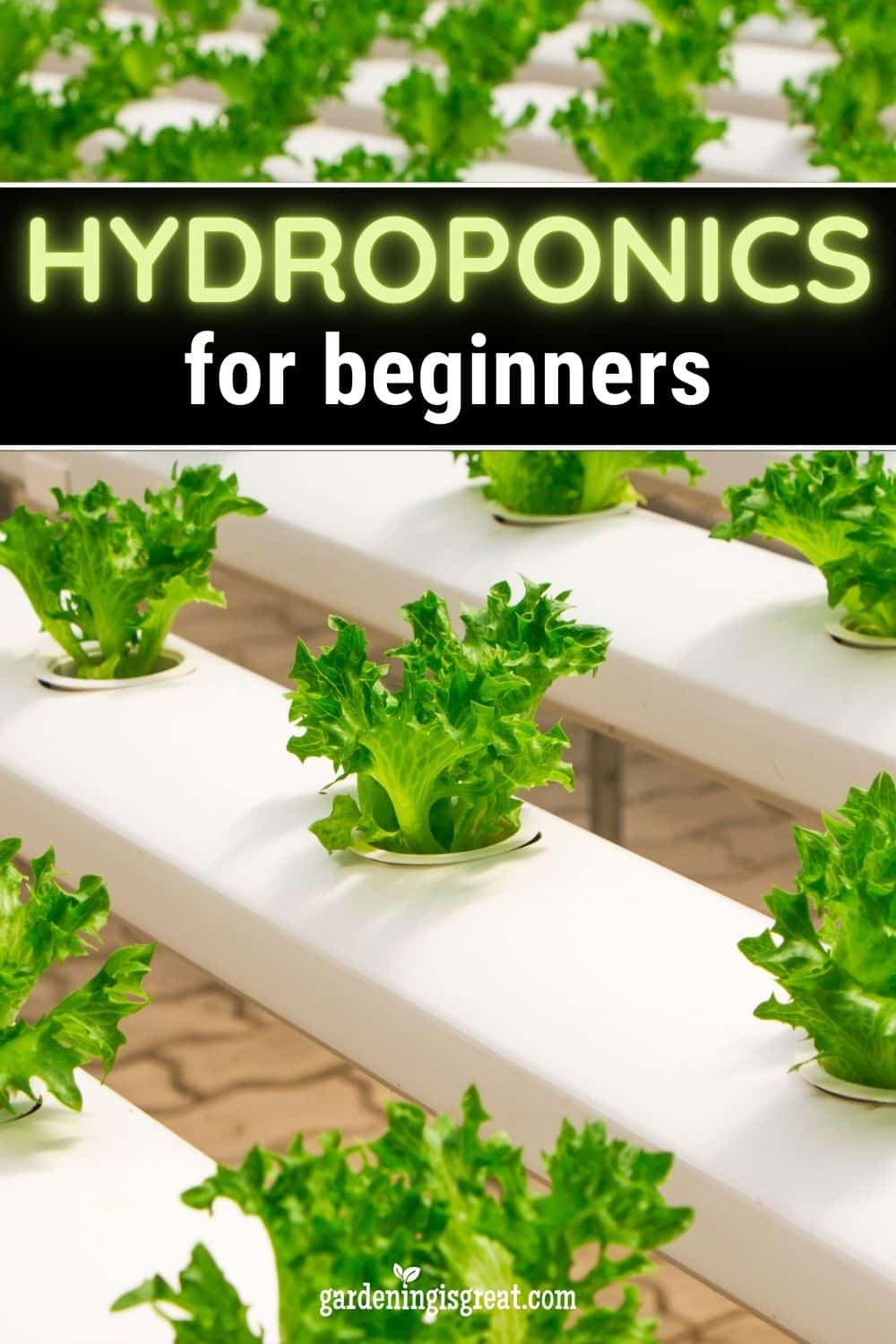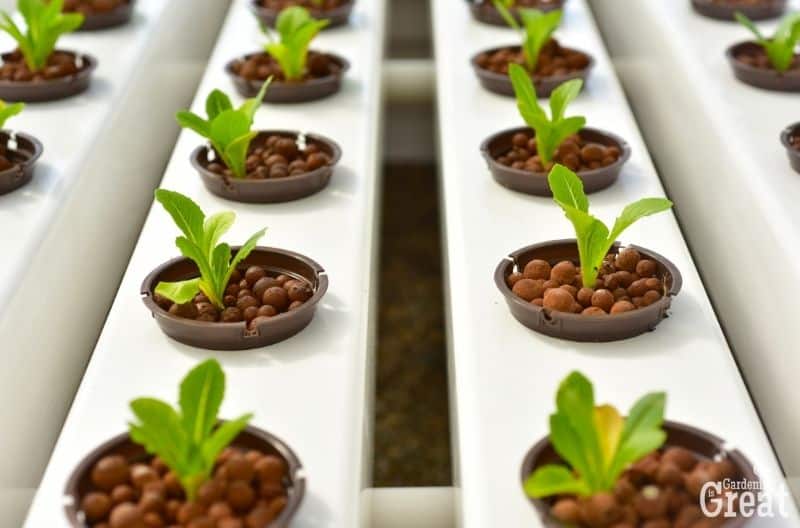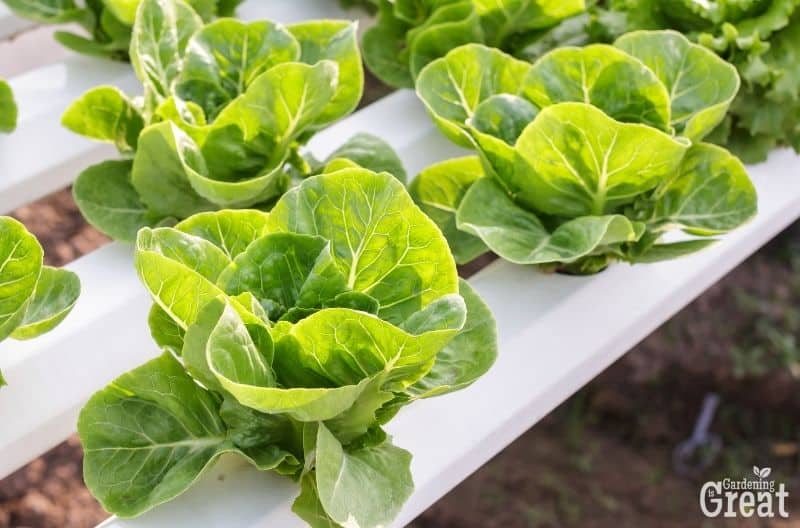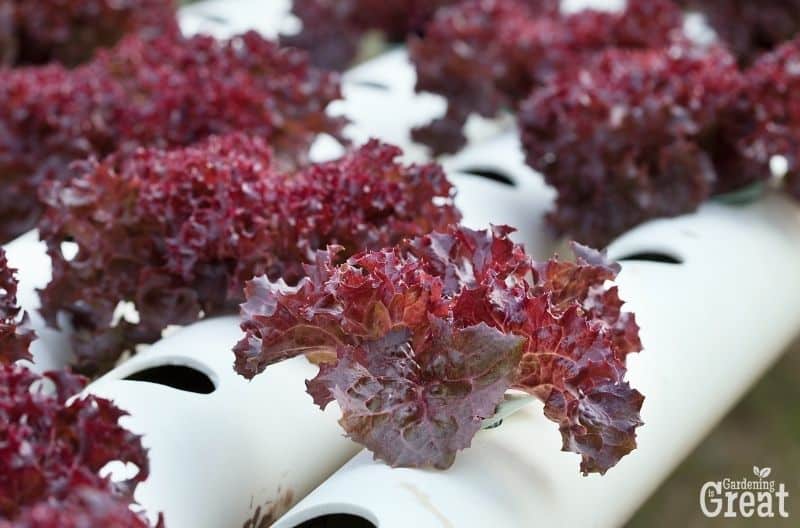A Guide to Hydroponics for Beginners
Hydroponics is a legitimate method of gardening that is even suitable for beginners. With the right knowledge, materials, and resources, hydroponics for beginners is possible and can help new gardeners to grow plants quickly and efficiently.
In this guide to hydroponics for beginners, you will learn what hydroponics is, how it works, the advantages and disadvantages, plus tips to getting started.

What is Hydroponics?
Hydroponics is an increasingly popular way of growing plants as it doesn’t require the use of soil, and you can keep growing all throughout the year as well.
Soil quality can vary considerably around the world. Without having to rely on soil, plants using hydroponics can grow almost anywhere with the right setup.
Hydroponics essential means ‘without soil.’ We assume plants need soil to grow because we see it everywhere from gardens to farmer’s fields. Plants are most commonly grown in soil but in actual fact plants only require the minerals they get from within soil to help them grow.
With hydroponics, the minerals are added to filtered water instead, making the use of soil redundant.

How Does Hydroponics Work?
Although there are a couple of different methods for creating a hydroponics system, all systems require:
Fresh Water
Providing your plants with fresh water is a crucial element to them thriving. This requires the water to have been filtered and the pH level adjusted to around 6-6.5 for an optimum level.
Nutrients
As mentioned above, plants require certain minerals in order to grow such as calcium, phosphorus, and magnesium. These nutrients can be added to the freshwater.
Root Support
Your plant roots no longer have soil to support them as they grow, so you need other materials that will provide support but won’t damage them. Alternative materials can be coconut fiber, peat moss, perlite, or vermiculite.
Ventilation
Just like you and I, your plants need to be able to breathe too. Unlike us, plants breathe in Carbon Dioxide and release Oxygen. Ensure your plants have access to fresh air and good ventilation so they can breathe and don’t get too hot.
Ideally, your plants will be surrounded by moving air, or have a fan that moves the air to remove excess heat, humidity, and provide access to fresh air.
Light
Most often hydroponic plants are grown indoors and don’t have access to natural sunlight. It is best to provide a specialized light source rather than any light fitting.
Consider using grow lights that have been specifically designed to provide both heat and light for photosynthesis to occur. Grow lights can focus on specific parts of the light spectrum so it is best to choose the correct light source for the types of plants you are growing e.g. leafy vegetables are best with Metal Halides that focus on the blue end of the spectrum. Whereas fruit plants require High-Pressure Sodium lights.
There are 6 main types of systems used to set up hydroponics:
- Nutrient Film Technique
- Ebb and Flow
- Aeroponic
- Deep Water Culture
- Wicking
- Drip
The key difference between them is how each system delivers the water, air, and nutrients your plants need to grow.
For individuals who are beginners to hydroponics, the easiest system to set up and use would be the Deep Water Culture system.
It is the cheapest, using the least amount of materials, and can be a lot easier to set up and use than the other hydroponic systems.
Your plants are added to a floatable material and placed inside a tub filled with water. Nutrients are added to the water and a pump is connected to the water to provide air bubbles to your plant’s roots. This ensures your plants will not drown in the water.
Advantages and Disadvantages of Hydroponics for Beginners
As with any method of growing plants, there are advantages and disadvantages for beginners to use hydroponics.
Advantages of Hydroponics
- When using a hydroponics system, plants tend to grow 20% faster than when they are grown in soil.
- No soil is required which saves mess indoors and is a huge benefit if you live in an area with low-quality soil.
- No water is wasted as plants use what they need and the rest is reserved to be used again.
- There aren’t any weeds to remove.
- Hydroponics lowers the number of pests and diseases from not using soil.
- Plants grow in a sustainable model and can be grown all year round, not limited by seasons, unlike traditional growing methods. This is because they have access to the right amount of light, water, air, and nutrients all year round.
Disadvantages of Hydroponics
- Setting up a system can be expensive with different materials needed such as a grow light.
- Though it requires little maintenance once set up, it does require you to monitor it regularly to check the water, nutrient, and air supply.
- Hydroponics can be a challenge to set up when starting out.
- You need to ensure it is kept clean otherwise micro-organisms could thrive and damage your plants.
- Hydroponic systems can leak causing damage and additional expenses.

How to Start a Hydroponic Garden for Beginners?
Now we have covered the basics of what hydroponics is, how it works, and the advantages and disadvantages, let’s take a look at how you can start a hydroponic garden if you are a beginner.
Choose a Hydroponic System
Based on the information covered above, I suggest you use the Deep Water Culture system as it is the easiest to set up and maintain for beginners.
This system is cheaper than others, easy to maintain, and successfully provides your plants with nutrients, water, and air.
Select Your Plants
When it is your first time using a hydroponics system, it is advised to not start from seeds but from a small germinated seedling.
Leafy greens such as lettuce, spinach, or herbs are some of the easiest plants to grow and make a great choice for a beginner at using hydroponics.
Once you have chosen what plants you are going to grow, you can then ensure you have adjusted:
- The water pH level
- Added the right mix of nutrients
- Purchased and set up the correct light source.
Choose Your Soil Alternative
With a hydroponics garden, your plants do not require any soil. But, the roots do need suitable support. Consider what soil alternative would provide maximum support to your choice in plants without being too compact.
Maintain Your System
Once your hydroponic system is all set up with your
- floatable material for your plants,
- soil alternative,
- container,
- water with the correct pH level,
- nutrients,
- light source,
- and airflow
You now need to continue to maintain your system. This needs to be carried out regularly to ensure the pH level stays consistent and your plants still have access to the nutrients they need. Plus, you need to ensure there is regular airflow to your plant’s roots so that they can breathe in the water and check for any potential leaks.

Setting up a hydroponics garden for beginners doesn’t have to be costly, nor require advanced knowledge of gardening.
Follow these simple steps to help you start your very own hydroponics garden and grow your plants quicker, in less space, and with a lower risk of disease and pests to control.
For more guides to gardening, take a look at these:
